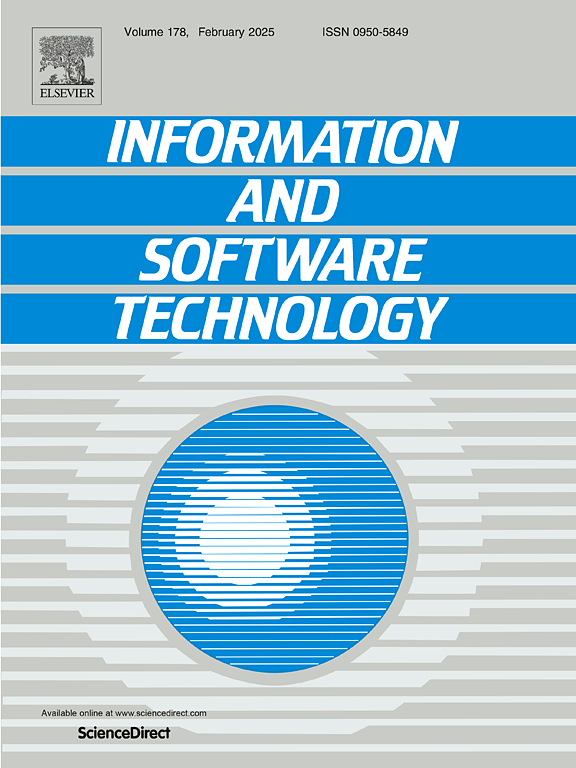Different and similar perceptions of communication among software developers
IF 3.8
2区 计算机科学
Q2 COMPUTER SCIENCE, INFORMATION SYSTEMS
引用次数: 0
Abstract
Context:
Software development is a collaborative task involving different persons. Development team members are often diverse in regard to several aspects, including experience, (soft) skills, and communication habits. Different preferences in what adequate communication looks like influence how communication is perceived and interpreted by team members.
Objective:
In this paper, we investigate differences and similarities in how software developers with varying levels of experience and skills perceive statements from exemplary software project communication.
Methods:
By applying hierarchical cluster analysis on the perception data of 94 software developers, we aim to find groups of developers sharing similar perceptions towards statements from software project communication, and to identify factors that influence this perception.
Results:
We contribute the following key findings: (1) We statistically identify two groups of software developers whose perceptions differ significantly for about 65% of statements from software project communication; (2) For a logistic regression model, five polarizing statements suffice to assign each participant to their group; (3) Although there is a significant difference in the communication perception, there are no demographic characteristics that differ notably across the two groups.
Conclusion:
From our results, we conclude that different perceptions of software project communication during collaboration within development teams are a potential risk for the teams’ mood and the project success. We outline how our results can serve use cases like the application of sentiment analysis in software engineering and mindful communication in software teams in general.
背景:软件开发是一项涉及不同人员的协作任务。开发团队成员往往在经验、(软)技能和沟通习惯等多个方面存在差异。方法:通过对 94 名软件开发人员的感知数据进行分层聚类分析,我们旨在找到对软件项目沟通声明有相似感知的开发人员群体,并找出影响这种感知的因素。结果:我们得出了以下主要结论:(1)我们从统计学角度确定了两组软件开发人员,他们对大约 65% 的软件项目沟通声明的看法存在显著差异;(2)在逻辑回归模型中,五个极化声明足以将每位参与者归入各自的组别;(3)尽管在沟通看法上存在显著差异,但两组人员的人口统计特征并无明显不同。结论:从我们的结果中,我们得出结论,在开发团队内部协作过程中,对软件项目沟通的不同看法是影响团队情绪和项目成功的潜在风险。我们概述了我们的研究结果如何服务于软件工程中的情感分析应用和软件团队中的心灵沟通等应用案例。
本文章由计算机程序翻译,如有差异,请以英文原文为准。
求助全文
约1分钟内获得全文
求助全文
来源期刊

Information and Software Technology
工程技术-计算机:软件工程
CiteScore
9.10
自引率
7.70%
发文量
164
审稿时长
9.6 weeks
期刊介绍:
Information and Software Technology is the international archival journal focusing on research and experience that contributes to the improvement of software development practices. The journal''s scope includes methods and techniques to better engineer software and manage its development. Articles submitted for review should have a clear component of software engineering or address ways to improve the engineering and management of software development. Areas covered by the journal include:
• Software management, quality and metrics,
• Software processes,
• Software architecture, modelling, specification, design and programming
• Functional and non-functional software requirements
• Software testing and verification & validation
• Empirical studies of all aspects of engineering and managing software development
Short Communications is a new section dedicated to short papers addressing new ideas, controversial opinions, "Negative" results and much more. Read the Guide for authors for more information.
The journal encourages and welcomes submissions of systematic literature studies (reviews and maps) within the scope of the journal. Information and Software Technology is the premiere outlet for systematic literature studies in software engineering.
 求助内容:
求助内容: 应助结果提醒方式:
应助结果提醒方式:


